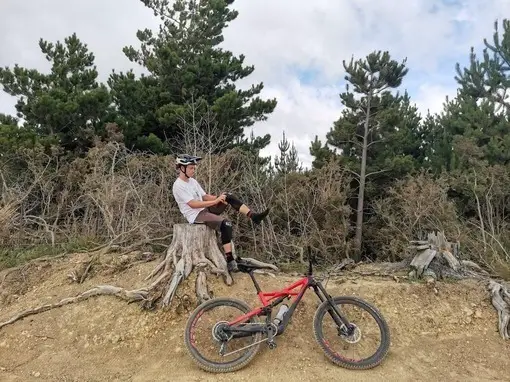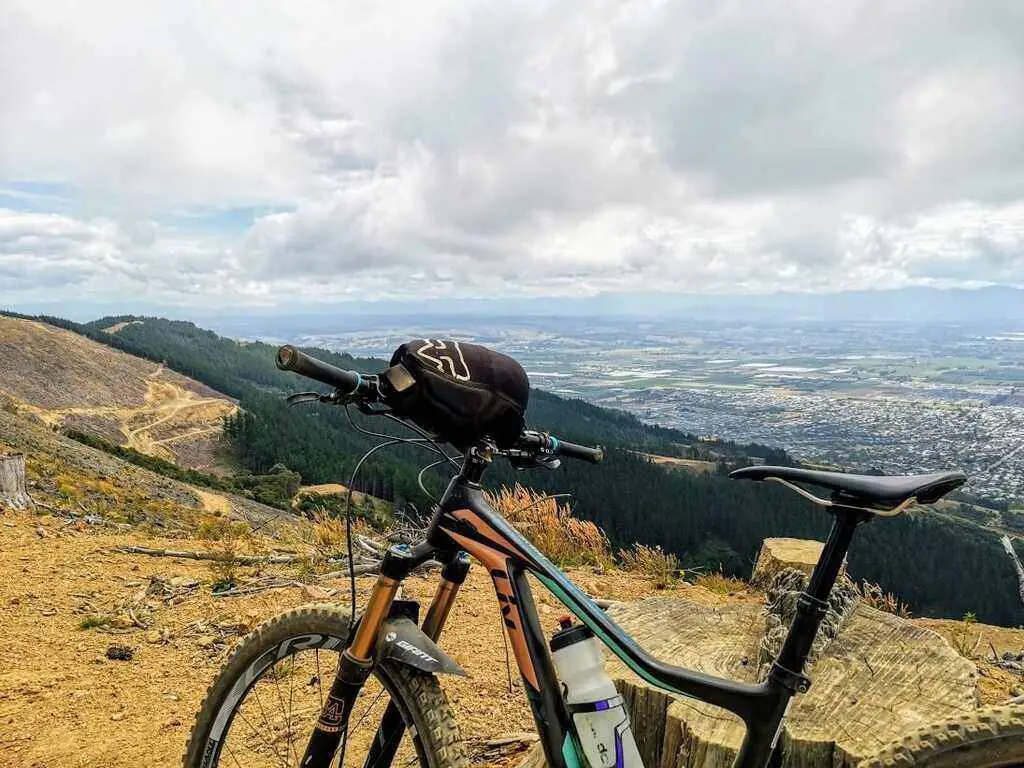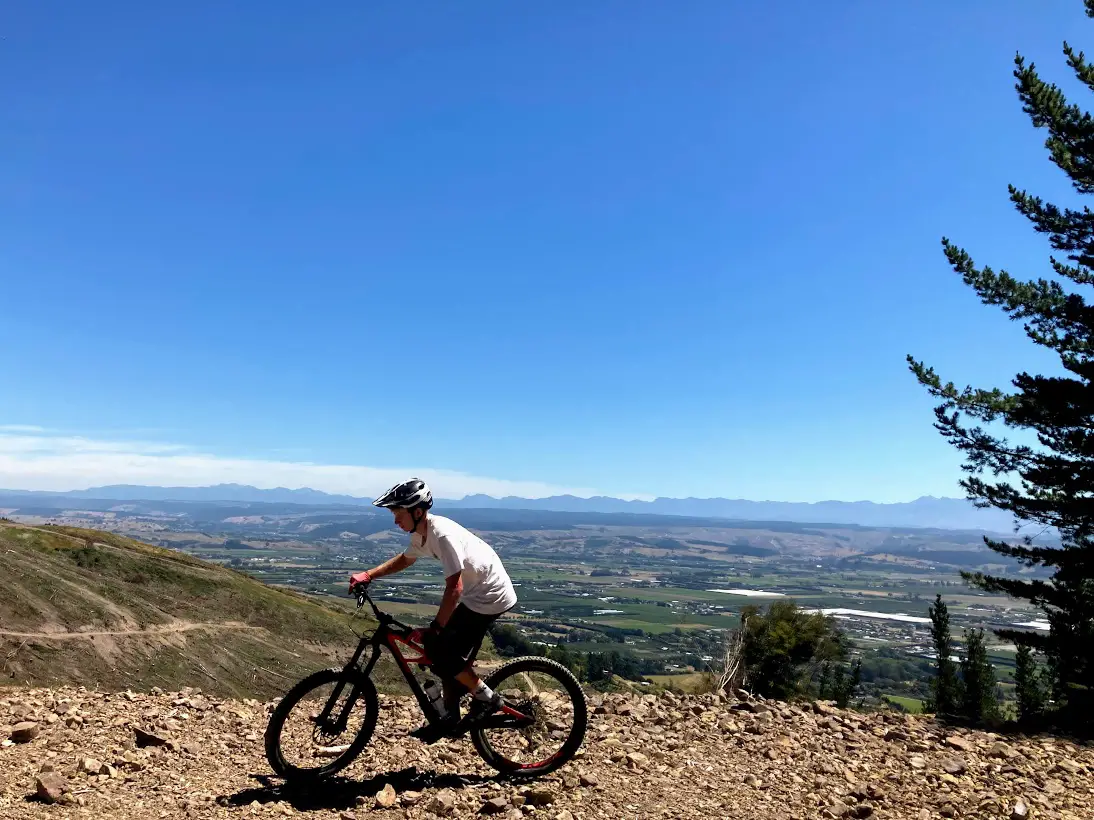I was thinking about this during a ride earlier today, how necessary are knee pads during mountain biking? Riding up the hill, I was getting pretty warm, cursing the existence of knee pads. It was probably 15 minutes later that my friend came off, taking a tumble down a steep shoot. He was undoubtedly thankful that his knee pads did their job!
Having suitable protective gear for mountain biking is essentially the same as having insurance. You don’t want insurance to cost so much it gets in the way of living, but you also want to match the right insurance to the risks you face. This is much the same as mountain biking- you don’t want the protection to get in the way of riding, but it is very convenient when you need it.
Knees are a super vulnerable part of the body and are likely to take a bit of a hammering in a fall. They are one of the first points of contact for your lower part of the body more often than not. Hence keeping the knees covered is pretty necessary for mountain biking!
Do I need knee pads for Mountain Biking?
If I was tackling anything I thought there might be a chance of hitting the ground, I wear my knee pads. The only time I don’t wear knee pads is on cruisy rides taking beginners around the tracks.
If you find your mountain bike knee pads are just too much effort to wear on rides, you are potentially wearing the wrong kind. Knee pads range from lightweight, comfortable pads for trail riding through to bulky heavy-duty pads and everything in between. So there is a set of pads for everyone.

Comfort is one of the most significant factors that many riders don’t consider when buying their knee pads. If you pedal a fair bit, try a ‘sleeve’ such as the Fox Enduro instead of less pedal-friendly options such as the Scott Grenade Evo. Things to look out for include having a hole at the back of the knee, as it tends to cut into your skin when you pedal. Another thing is to look at how the knee pad stays up. Velcro systems stay up better and usually last longer than pads held up by elastic and a silicone gripper. Having a velcro strap means you can loosen the part around your thighs when you pedal too.
Breathability is another factor in mountain bike knee pads that many riders don’t consider. Look for perforated neoprene and lighter mesh materials for a breathable set of mountain bike knee pads.
Why Wear Mountain Bike Knee Pads?
A) Protection
You hear a lot of stories of people coming off and saying they were so lucky they had knee pads. They aren’t wrong. A smashed knee cap or knee surgery isn’t fun, and wearing knee pads is the far easier option.
Additionally, some knee pads have extra padding that offers a bit of shin protection and protection on the sides of the knees. While often it isn’t full-on D30 protection in these areas (sometimes it is, though!), it does stop the scrapes and bruises. This allows you to come away from many crashes pretty much scotch-free!
B) Confidence
With crashes, big and small, there is a bit of healing time and a loss of fitness. With this comes a loss of confidence. So, if you know that you have a bit more knee protection, you can start hitting those trials a little harder, knowing that one of your most exposed parts of your body is very protected. Because of this, you start to build a little more confidence. And consequently, you start to approach sections less nervously, which helps your riding quite significantly.
Just remember that the knee pads won’t stop all injuries, so maybe don’t get too confident!
C) Keep your knees warm
A little extra warmth on the knees goes a long way when you are riding in the cooler months. Keeping the knees warm keeps the surrounding tendons and joints warm, which from a physiotherapy side of things, helps prevent injury.
How to wear knee pads while pedaling?
Pretty much the main reason not to wear knee pads is because they sweaty as you pedal or being uncomfortable. There are two ways of getting around this.
- Get a set of breathable, light, comfortable knee pads.
- Don’t wear the knee pads during climbs or lengthy pedaling sections.
A breathable, lightweight, comfortable knee pad does exist!! The main downside to having some is that you generally lose a bit of protection as you find more pedal-friendly pads. See the next section for the lightweight vs. heavy-duty knee pad discussion.
I tend to wear my knee pads around my shins until I need them. This works as I have top and bottom straps which hold the knee pad in place while I pedal to the park and up hills.
Otherwise, I store them on my mountain bike handlebars. I’ll only do this if there aren’t any downhill trails on the way, as having the bulky knee pads on the handlebars isn’t the most agile of riding.

Other riders I know strap the knee pads to their bike frame, tuck the pads into the back of their pants for the climb, or chuck them in a backpack until they are needed. All of these are pretty easy solutions to the sweaty knee issue!
Do I need bulky knee pads for mountain biking?
Effectively there are two categories of knee pads, lightweight and heavy-duty knee pads. The heavy-duty knee pad is a more protective set of pads that weigh a bit more but also protect you a fair bit more. The lightweight knee pads essentially take the edge off a knock or prevent big scrapes and abrasions.
You want to work out where on the spectrum of riding you sit. It will be somewhere between a casual ‘trail’ rider who enjoys the uphill’s just as much as the down and a hardcore downhill rider. In between, you have a whole spectrum of riders as the difficulty of trails also ranges, and you have enduro riders in there too.
If you reside nearer to the easy-going trail rider on the scale, you will want comfortable, pedal-friendly, lightweight knee pads. See this list here for the top pedal-friendly knee pads on the market.
For the enduro riders, protection will be essential, but you will still need to pedal. See here for this in-depth list, made for the enduro riders.
A downhill rider needs impact protection more than anything. More often than not, shuttles or chairlifts at the bike park will mean downhill riders don’t necessarily need ‘pedal friendly’ pads. Otherwise, there is always the ‘wrap the pads around your shins’ option, or take them off for the climbs!
Final Thoughts
The benefits of knee pads far outweigh the negatives of knee pads. Especially if you can find the right pair of knee pads for your riding, you will often forget they are there until you need them! Knee pads are necessary for mountain biking, especially if you lack confidence on a trail.
Knee injuries off a bike can be very serious, and a good set of mtb knee pads can save you considerable healing time and loss of confidence. Along with a good helmet, gloves and a decent set of mountain bike knee pads, you will have a kitted outset of body armor to help you come away from a crash scotch-free!
If you want more information on the right set of knee pads and protective gear for your mountain bike rides, see how to choose knee pads for mountain biking?
Also, have a look at our reviews on the Fox Launch D3O and Fox Enduro Pro knee pads to get a good idea of some great quality, comfortable knee pads.
